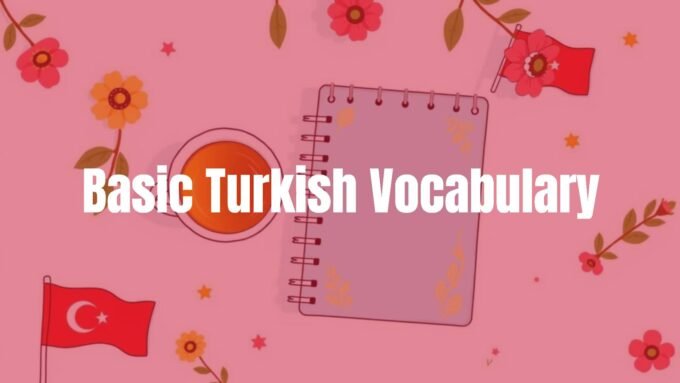Turkish to English translation goes beyond swapping words. It connects two very different languages and cultures. Whether you are a business owner reaching new markets, a student doing research, a traveler finding your way in Istanbul, or someone keeping in touch with Turkish-speaking friends or family, accurate and natural translation matters. This guide explains how Turkish to English translation works, where it is used, common language hurdles, helpful tools, and good habits that lead to clear communication.
Turkish to English translation supports understanding and daily interaction across many areas. It helps share information, build relationships, and move ideas between Turkish and English speakers. Without solid translation, many chances for cultural exchange, business growth, and personal connection would be lost.
Turkish to English Translation: Key Facts and Uses
Demand for Turkish to English translation keeps growing as Turkey’s role in trade, politics, and culture expands and global links increase. Accurate language work is very important for anyone reading Turkish content or working with Turkish speakers.
Turkish belongs to the Turkic family and has about 79.4 million speakers, mostly in Turkey and also in 8 other countries. English is an Indo-European language and a global common language, with about 379 million speakers in 137 countries. This big difference in spread and language family shows why expert translation is so important.
| Language | Family | Approx. Native Speakers | Countries |
|---|---|---|---|
| Turkish | Turkic | ~79.4 million | Turkey + 8 other countries |
| English | Indo-European | ~379 million | 137 countries |

Who Needs Turkish to English Translation?
- Tourists: basic phrases for directions, shopping, and dining.
- Businesses: contracts, marketing, websites, product guides, and emails.
- Legal teams: certified versions of official papers and case files.
- Healthcare staff: patient records, consent forms, research papers.
- Academics: articles, theses, and historical texts for wider sharing.
- Individuals: messages with friends and family for clear, kind communication.
Common Scenarios Requiring Turkish to English Translation
There are many everyday cases where this language pair is needed. A Turkish company launching a product in English-speaking markets needs its website, product pages, and ads in clear English. A law firm handling a cross-border case needs contracts, statements, and court papers in precise English to meet legal rules.
Tourism also depends on translation: hotels, tour companies, and museums translate brochures, menus, and signs for global visitors. In media and entertainment, Turkish films, series, and books reach new audiences through English versions. Even personal letters and emails often need professional help when the tone and meaning matter.
Turkish and English: Language Differences That Affect Translation
Translating between Turkish and English is not just word-by-word work. These languages have different structures, roots, and cultural bases. Turkish is agglutinative, building long words with suffixes. English relies more on word order and prepositions. These core differences bring special challenges, so translators need a strong grasp of both languages and their cultures.
Knowing these differences helps you see why high-quality Turkish to English translation needs skill and care. It also explains why direct machine output can sound odd and miss idioms and natural flow that people expect.
Key Grammar and Syntax Differences
Turkish usually uses Subject-Object-Verb (SOV) order, while English uses Subject-Verb-Object (SVO). For example, English says “I eat apples,” while Turkish is closer to “I apples eat.” Good translation often means reordering the whole sentence, not just swapping words.

Also, Turkish adds many suffixes to a root to show tense, possession, and more. One Turkish word can match a whole English sentence. English uses separate words, prepositions, and helper verbs. Breaking down long Turkish words and writing their meaning naturally in English is a key skill.
False Friends and Tricky Vocabulary
Translators also face “false friends,” which look or sound similar but mean different things. This is less common for Turkish-English than some European pairs, but it still happens. More often, small differences in tone and use can lead to errors without cultural knowledge.
Word origins differ too. Turkish has many words from Arabic, Persian, and French. English mixes Germanic and Latin roots. Direct matches may not exist, so you often pick the best English word for the context and tone, not just the dictionary headword.
Cultural Context and Local Expressions
One of the hardest parts is the cultural gap. Idioms, set phrases, and polite forms rarely map one-to-one. A literal version can sound odd or rude. For example, “kolay gelsin” is a common way to wish someone an easy time at work. A word-for-word version in English would miss the meaning.
A skilled translator reads the feeling and purpose behind the phrase and finds a natural English option that fits. This cultural sense makes the result feel real to native English readers.
How Does Turkish to English Translation Work?
Over time, the process has changed a lot. Today you can choose human translation, machine translation, or a mix. Each has strengths and limits. The best choice depends on how exact you need the result to be, how fast you need it, and your budget.
Knowing how each method works helps you choose the right path and shows why human skill is still needed for some content.
Machine Translation vs. Human Translation
Machine translation (MT) uses advanced algorithms and AI. Tools like Google Translate and DeepL give instant Turkish-English output, which is great for quick understanding, simple lines, or when time is tight. DeepL’s free plan allows up to 3,000 characters, and Translate.com offers 500 free characters of AI translation per month after signup.
But MT often misses tone, idioms, and complex grammar. Human translators, fluent in both languages and often focused on a field (technical, medical, legal), produce text that is accurate, culturally right, and natural. For key documents, business writing, or creative work, people are usually the better choice. Many teams use a multi-step flow: draft (sometimes with MT), human editing, and a final review.
What Tools Are Used for Turkish English Translation?
Both people and machines use many tools. MT platforms let you paste text or upload files like .pdf, .docx, and .pptx. Some services, such as Translate.com, also accept .txt, .xls, .odt, .rtf, .xliff, .csv, .po, .indd, .idml, .ai, and .fig.
Human translators rely on CAT tools. These do not translate by themselves, but they help with:
- Translation memory (TM) to reuse past segments.
- Terminology management to keep terms consistent.
- Monolingual and bilingual dictionaries.
- Context tools like Reverso Context for real examples.
How Accurate Are Online Translators for Turkish and English?
Accuracy varies a lot by tool and text type. For short, simple lines, MT can work fine. When sentences get longer, include idioms, or have complex structure, errors increase. Literal output can sound awkward, break grammar, or change meaning.
Tureng Dictionary offers a huge database and audio, but it clearly says its entries are “entirely machine-generated” and “may contain errors, omissions, or misinterpretations.” This shows the limits of using automation alone for sensitive or tricky texts. MT is useful for a quick read, but for legal, medical, business, or creative content, human review is usually needed.
Dictionary and Language Resources for Turkish to English Translation
Working across Turkish and English needs strong resources. Dictionaries and language tools guide everyone from casual learners to pros. The right tools help you handle hard vocabulary and grammar and write clear, natural English.
There are many tools out there. Knowing what each does best helps you pick the right mix for steady progress, from full-featured dictionaries to context-driven platforms.
Choosing the Right Turkish English Dictionary
Picking a good Turkish-English dictionary is a basic step. Your choice depends on your needs:
- Beginners: clear definitions and simple examples.
- Specialists (law, medicine, tech): field-specific terms and usage.
Tureng has over 2 million words and lets you search by field, which helps with special terms. The Cambridge Dictionary offers data-driven entries and translation dictionaries to check meaning in many languages. A good dictionary also lists multiple senses of a word with examples.
Key Features of Online Turkish English Dictionaries
Online dictionaries add features beyond print books. Many include audio, sample sentences, and synonyms. Tureng lets you hear 9 accents in 4 languages, which helps with speaking practice.
Searching in context is also very helpful. Reverso Context shows Turkish-English examples from real use, which makes it easier to pick the right phrase and write natural sentences. Some platforms are collaborative, so users can suggest fixes and new entries.
Pronunciation and Usage Examples
Accurate pronunciation is very important for clear speech. Many online tools include audio by native speakers. This helps with stress and intonation, which can be hard in Turkish. Reverso Context also plays audio for examples, so you hear words in real lines.
Usage examples matter as much as definitions. Many words have several meanings. Multiple sample sentences show how to use a word in different cases. This focus on real use turns a dictionary into a strong learning and translation tool.
Popular Turkish to English Phrases and Expressions
Learning a new language often starts with common phrases. For Turkish to English, these building blocks show daily habits and culture. From greetings to idioms, they help you pick natural English that fits the moment.
MT can handle single words, but real translation aims to carry the feeling and purpose of a phrase. Below are frequent items with direct and natural English options.
Frequently Requested Words and Sentences
| Turkish | English |
|---|---|
| Merhaba | Hello |
| Yardım | Help |
| Lütfen | Please |
| Teşekkür ederiz | Thank you |
| Ne kadar? | How much? |
| Nerede? | Where is …? |
| İsterim | I would like |
| Lütfen kontrol edin | Check please |
| Benim adım… | My name is… |
| alkış | Cheers |
Turkish Idioms and Their English Equivalents
Idioms are hard because the meaning does not match the words. “Göz atmak” is “to throw an eye” literally, but it means “to glance” or “to skim.” “Kulak misafiri olmak” is “to be a guest of the ear,” but it means “to overhear.”
“Eline sağlık” literally means “health to your hand.” People say it to praise someone’s work, especially cooking. In English you might say “well done,” “nice job,” or “bless your hands,” depending on the tone and setting. The translator’s job is to carry the same feeling into English.
Common Mistakes When Translating Between Turkish and English
Common errors include literal word-for-word output, especially with idioms and phrasal verbs. As with “göz atmak,” a literal version often sounds wrong in English. Another frequent issue is word order. If you keep Turkish SOV order, the English sentence may be confusing or ungrammatical.
Cultural gaps also cause problems. A line that is polite in Turkish can seem too formal or even rude in English. Levels of formality differ a lot. Relying only on MT without a human check also leads to mistakes, small or big, depending on how important the text is.
Practical Tips for Accurate Turkish to English Translation
Good Turkish to English translation needs language skill and a clear process. Whether you translate for work or for personal use, the habits below can make your results clearer and more reliable. It is not just about words; it is about how the final text reads to your target reader.
These tips help you avoid common traps and produce text that is precise and culturally right. Careful checks and attention to tone go a long way.
How to Check the Quality of Your Translation
To make sure your translation is strong, follow a few steps. First, proofread the English text for grammar, spelling, and punctuation. Take a short break, then read again to spot small slips.
Next, compare the English with the Turkish source. Check if the meaning, tone, and intent match. Watch for missing parts, added ideas, or changed meaning. For sensitive work, ask a second reviewer who knows both languages well to review it. Many services use several stages, such as draft, edit, expert check, and client review, to reach high quality.
Avoiding Literal Translation Errors
Word-for-word output rarely works across Turkish and English. Focus on meaning and intent. If you see an idiom or culture-specific line, avoid a literal version. Think about what it really says, then pick an English phrase that carries the same idea.
For example, if a Turkish saying mentions “drinking coffee with the devil,” look at what it implies (risk, odd company, or a hard choice) and choose a natural English phrase with that idea. Using context tools like Reverso Context helps you see real examples and choose better phrasing.
Best Practices for Professional Turkish English Translators
- Specialize: focus on fields like legal, medical, or technical to handle terms and concepts correctly.
- Use CAT tools and translation memory: keep terms and phrasing steady across large projects.
- Stay current: follow changes in Turkish and English usage and culture.
- Work in stages: initial draft (sometimes with MT), edit by a second translator, and a final expert review before delivery.
Frequently Asked Questions about Turkish English Translation
As global links grow, many people need Turkish to English translation. You may be reading a personal document or running an international project. Below are clear answers to common questions about the process, challenges, and tools. These notes aim to make the process clear and help you pick the right approach.
From handling typical problems to using new tech, these FAQs offer practical tips for anyone working with this language pair. Knowing these points helps you make better choices and get better results.
What Are the Most Common Translation Challenges?
The main hurdle is structure. Turkish is agglutinative and uses SOV order. English is analytic and uses SVO. This often requires a full rewrite of the sentence in English, not just a swap of words.
Another big challenge is culture and idioms. Many Turkish phrases have no direct English match, so you need a natural English line that fits the same purpose. Vocabulary can also be tricky because of different roots and false friends. Keeping terms consistent in technical work needs careful attention and often a translation memory.
Are There Automatic Translation Apps for Turkish English?
Yes. Tools like Google Translate, DeepL, and Translate.com can translate text instantly. Some include voice and photo features, which help with quick chats or reading signs. Many accept file uploads such as .pdf, .docx, and .pptx.
These apps keep improving for simple lines, but they still struggle with complex grammar, idioms, and culture. For important documents or fine shades of meaning, use them as a start, then add human review and editing to make it accurate and natural.
How Can You Improve Your Turkish English Language Skills?
Improvement takes steady practice. First, get regular input in both languages. Watch movies and series, listen to music, and read news and books in Turkish and English. This builds vocabulary and helps you see patterns and style.
Speak and write often. Talk with native speakers, join language exchanges, or work with a tutor. If you plan to translate, pick a field and build your own term lists. Use full dictionaries and context tools like the Cambridge Dictionary and Reverso Context for real examples. Finally, ask skilled translators or native speakers to review your work. Feedback helps you spot gaps and sharpen accuracy.















Leave a comment